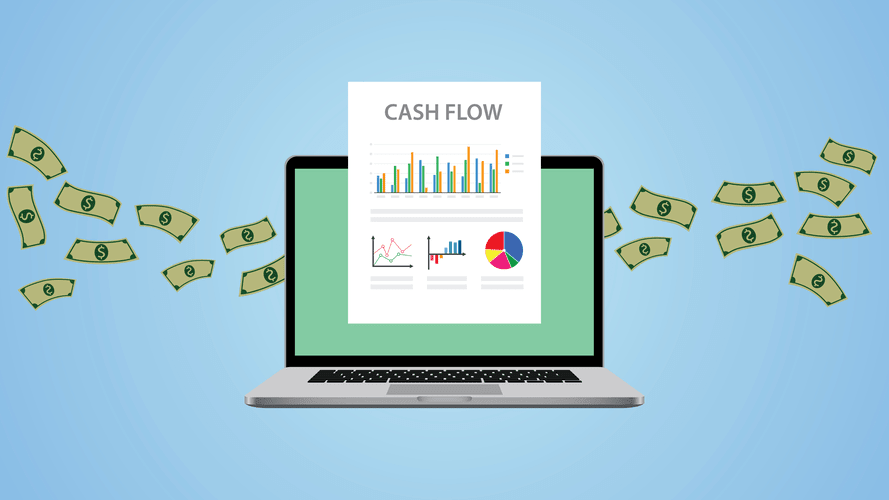Other terms might be net 10 days, due upon receipt, net 60 days, etc. The book value of an asset is the amount of cost in its asset account less the accumulated depreciation applicable to the asset. The book value of an asset is also referred to as the carrying value of the asset.
Accounts
It is important to realize that the amount of retained earnings will not be in the corporation’s bank accounts. The reason is that corporations will likely use the cash generated from its earnings to purchase productive bookkeeping check list: the basic rules of daily usage assets, reduce debt, purchase shares of its common stock from existing stockholders, etc. Sometimes liabilities (and stockholders’ equity) are also thought of as sources of a corporation’s assets. For example, when a corporation borrows money from its bank, the bank loan was a source of the corporation’s assets, and the balance owed on the loan is a claim on the corporation’s assets. The current asset other receivables is the amount other than accounts receivable that a company has a right to receive. The operating cycle for a distributor of goods is the average time it takes for the distributor’s cash to return to its checking account after purchasing goods for sale.
By examining the components of a balance sheet and learning how to analyze it, you can make informed decisions and better understand the financial health of a company. These ratios measure how effectively a company is using its assets and liabilities to generate sales and profits. Examples include the asset turnover ratio (sales divided by average total assets) and the inventory turnover ratio (cost of goods sold divided by average inventory).
Balance Sheet Equation
It can be looked at on its own and in conjunction with other statements like the income statement and cash flow statement to get a full picture of a company’s health. Balance sheets, like all financial statements, will have minor differences between organizations and industries. However, there are several “buckets” and line items that are almost always included in common balance sheets. We briefly go through commonly found line items under Current Assets, Long-Term Assets, Current Liabilities, Long-term Liabilities, and Equity.
Short-term loans payable
I recommend reading up on the accounting equation first because it plays an important role in producing balance sheets which are derived using the double entry bookkeeping method. Many different financial ratios can be calculated from the information on a balance sheet. If you want to see more examples of balance sheets, look at the Companies House website. All Limited companies must submit a Balance Sheet each year, which is available to view. For larger companies, they may even have the report on their website.
In other words, they are listed on the report for the same amount of money the company paid for them. This typically creates a discrepancy between what is listed on the report and the true fair market value of the resources. For instance, a building that was purchased in 1975 for $20,000 could be worth $1,000,000 today, but it will only be listed for $20,000. This is consistent with the balance sheet definition that states the report should record actual events rather than speculative numbers. Changes in balance sheet accounts are also used to calculate cash flow in the cash flow statement. For example, a positive change in plant, property, and equipment is equal to capital expenditure minus depreciation expense.
Break-Even Analysis Template
The final liability appearing on a company’s balance sheet is commitments and contingencies along with a reference to the notes to the financial statements. Current liabilities are a company’s obligations that will come due within one year of the balance sheet’s date and will require the use of a current asset or create another current liability. In addition to our balance sheet templates, our business forms also offer templates for the income statement, statement of cash flows, and more.
For example, accounts receivable must be continually assessed for impairment and adjusted to reflect potential uncollectible accounts. Without knowing which receivables a company is likely to actually receive, a company must make estimates and reflect its best guess as part of the balance sheet. A pro forma balance sheet makes estimates on the future effects on assets, liabilities, and net worth after applying assumptions and projections to the current performance of the company.
While the balance sheet can be prepared at any time, it is mostly prepared at the end of the accounting period. The main purpose of the statement of cash flows is to report on the cash receipts and cash disbursements of an entity during an accounting period. Broadly defined, cash includes both cash and cash equivalents, such as short-term investments in Treasury bills, commercial paper, and money market funds. Another purpose of this statement is to report on the entity’s investing and financing activities for the period. The statement of cash flows reports the effects on cash during a period of a company’s operating, investing, and financing activities. Firms show the effects of significant investing and financing activities that do not affect cash buy vs lease equipment in a schedule separate from the statement of cash flows.
- These AI systems continuously learn from historical data, adapting to changing reconciliation patterns and enhancing accuracy over time.
- This balance sheet provides a comprehensive view of the company’s financial health.
- The assets are made up of fixed and intangible assets, bank, stock and debtors.
- Accounts Payables, or AP, is the amount a company owes suppliers for items or services purchased on credit.
- Different industries, and therefore different companies, may have slight variations in reporting standards.
- It is also convenient to compare the current assets with the current liabilities.
- These are the company’s debts or obligations, such as loans, accounts payable, and accrued expenses.
- Examples of such assets include long-term investments, equipment, plant and machinery, land and buildings, and intangible assets.
A company must also usually provide a balance sheet to private investors when attempting to secure private equity funding. In both cases, the external party aims to assess the financial health of a company, its creditworthiness, and whether it will be able to repay its short-term debts. Balance sheets can tell you a lot of information about your business, and help you plan strategically to make it more liquid, financially stable, and appealing to investors.
It’s like a seesaw – what goes up on how to open a business bank account online one side has to come down on the other. This means that for the balance sheet to accurately reflect the financial position of the business, the total assets must equal the total liabilities plus equity. In conclusion, understanding balance sheets is essential for anyone interested in assessing a company’s financial health.
Bench simplifies your small business accounting by combining intuitive software that automates the busywork with real, professional human support. This ratio relates the costs in inventory to the cost of the goods sold. The net of the asset and its related contra asset account is referred to as the asset’s book value or carrying value.
If depreciation expense is known, capital expenditure can be calculated and included as a cash outflow under cash flow from investing in the cash flow statement. This account includes the total amount of long-term debt (excluding the current portion, if that account is present under current liabilities). This account is derived from the debt schedule, which outlines all of the company’s outstanding debt, the interest expense, and the principal repayment for every period.
An asset account which is expected to have a credit balance (which is contrary to the normal debit balance of an asset account). For example, the contra asset account Allowance for Doubtful Accounts is related to Accounts Receivable. The contra asset account Accumulated Depreciation is related to a constructed asset(s), and the contra asset account Accumulated Depletion is related to natural resources. A nongovernment group of seven members assisted by a large research staff which is responsible for the setting of accounting standards, rules, and principles for financial reporting by U.S. entities. A few examples of general ledger liability accounts include Accounts Payable, Short-term Loans Payable, Accrued Liabilities, Deferred Revenues, Bonds Payable, and many more. These amounts are likely different from the amounts reported on the company’s income tax return.
An analyst can generally use the balance sheet to calculate a lot of financial ratios that help determine how well a company is performing, how liquid or solvent a company is, and how efficient it is. As described at the start of this article, a balance sheet is prepared to disclose the financial position of the company at a particular point in time. For example, investors and creditors use it to evaluate the capital structure, liquidity, and solvency position of the business. On the basis of such evaluation, they anticipate the future performance of the company in terms of profitability and cash flows and make important economic decisions. Liabilities are obligations to parties other than owners of the business. They are grouped as current liabilities and long-term liabilities in the balance sheet.





